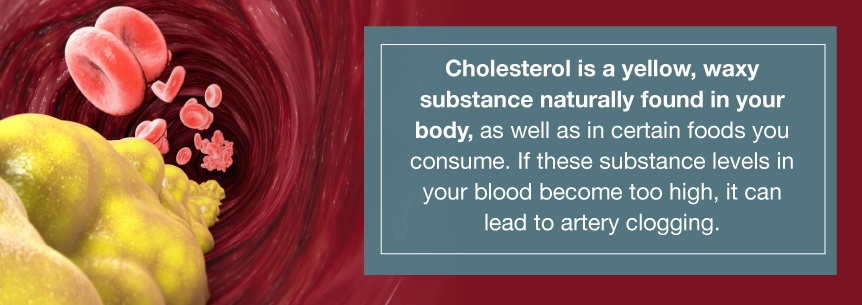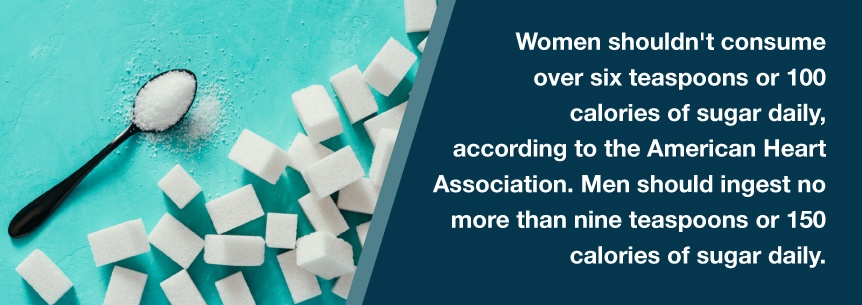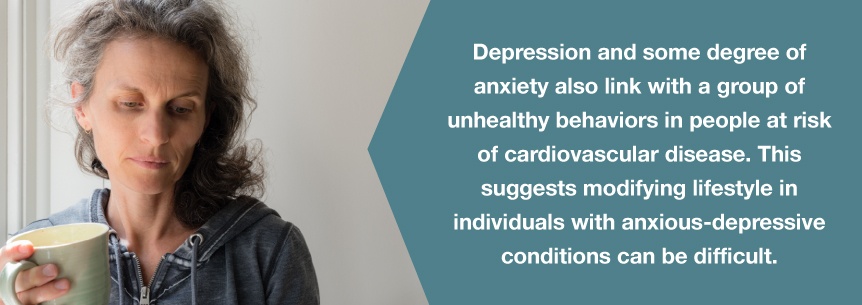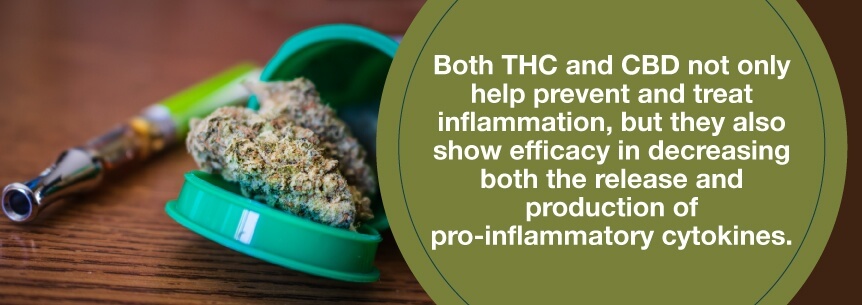Symptoms of atherosclerosis can make life unpleasant, particularly when the condition becomes moderate or severe and is affecting the arteries in your heart, brain, kidneys or arms and legs. Cannabis for atherosclerosis can help with symptoms like chest pain, inflammation, trouble sleeping, anxiety, and depression.
Atherosclerosis occurs when cholesterol, calcium, and fat harden in your arteries. It can occur in an artery anywhere in your body, like your legs, heart or kidneys. Your blood vessels are responsible for carrying nutrients and oxygen from your heart to your body, but when the arteries become stiff and thick, it’s called atherosclerosis. In some cases, the condition can limit the amount of blood that reaches your tissues and organs. Healthy arteries have good elasticity, but as time goes on, your artery walls can become tough.
Atherosclerosis is a particular form of arteriosclerosis, but medical professionals may use the two terms interchangeably. Atherosclerosis is where you have an accumulation of cholesterol, fats and other substances on and in the walls of your arteries that may restrict the flow of blood.
This plaque can burst, leading to a blood clot. While you may think of atherosclerosis as a heart condition, it can have an impact on the arteries anywhere in your body. Fortunately, you can prevent atherosclerosis and treat it.
Atherosclerosis develops over time. Mild cases of the condition don’t typically have any warning signs. You likely won’t experience any symptoms of atherosclerosis until you have a clogged or narrowed artery that gets to the point where it can’t supply sufficient blood to your tissues and organs. In some cases, a blood clot will block blood flow completely, or it can break apart, triggering a stroke or heart attack.
Moderate to severe atherosclerosis symptoms depend on the affected arteries. For instance:
The buildup of plaque and later hardening of the arteries restricts artery blood flow and prevents your tissues and organs from receiving the oxygenated blood they require to function.
Below are some common causes of artery hardening:
Cholesterol is a yellow, waxy substance naturally found in your body, as well as in certain foods you consume. If these substance levels in your blood become too high, it can lead to artery clogging. It turns into a hard plaque that blocks or restricts blood circulation to your heart and other body organs.

You need to consume a healthy diet.

The AHA also suggests you consume an overall healthy diet containing:
As you get older, your blood vessels and heart work harder to receive and pump blood. Your arteries can become less elastic, weaken and become more susceptible to a buildup of plaque.
Two subtypes of arteriosclerosis include:
1. Hyaline arteriolosclerosis — This type involves thickening of the walls of arterioles as a result of homogeneous pink hyaline material, which develops during aging.
2. Hyperplastic arteriolosclerosis — This type involves a narrowed lumen, or the inside part of the artery, and can lead to acute kidney failure.
Atherosclerosis complications depend on the blocked arteries. These include:
In a study published in the journal Atherosclerosis, researchers assessed depression and anxiety in patients with cardiovascular risks. Both were significantly linked with physical inactivity in both men and women and with an unhealthy diet in men only. Depression and anxiety were both connected to smoking habits in men significantly and just depression in women who smoked.
In both men and women, the global score connected with unhealthy lifestyles linked positively with the degree of depression and anxiety. Both appeared in multivariate analysis as an independent determinant of an unhealthy lifestyle in both women and men, with depression having a stronger influence.
Depression and some degree of anxiety also link with a group of unhealthy behaviors in people at risk of cardiovascular disease. This suggests modifying lifestyle in individuals with anxious-depressive conditions can be difficult.

Statistics from Merck & Co., Inc. reveal:
The history of atherosclerosis includes this timeline:
Treatment might include:
These help control risk factors, and include:
Doctors may prescribe certain medications to treat conditions such as statin drugs for high cholesterol or anti-hypertensive medicines for high blood pressure.
They may prescribe an antiplatelet medicine like clopidogrel and aspirin to reduce the risk of stroke or heart attack. In many cases, they may prescribe patients both medications to reduce the risk of cardiovascular complications like stroke or heart attack.
Side effects of clopidogrel can include:
Doctors may prescribe cilostazol to improve walking distance. Cilostazol has helped some patients with intermittent leg pain exercise longer before they start experiencing discomfort, and helping them walk longer before pain makes them stop. But, not all people are eligible for this medicine, and in some cases, other treatments can offer them better leg pain relief.
Side effects of cilostazol might include:
Recently, there have been numerous advances in the treatment and pathogenesis of atherosclerosis and in evaluating outcome in carotid atherosclerosis. By determining the individuals most likely to do well with intensive therapy by measuring the related burden of carotid plaque, medical experts can better assess the risk classification for improving the prevention of vascular issues. In asymptomatic carotid stenosis patients, numerous modalities may identify the 10 to 15 percent who could benefit from stenting or endarterectomy.
New approaches are in development, including imaging of early calcification and plaque inflammation on computed tomography or positron emission tomography and plaque texture on ultrasound.
Medical researchers have completed or are currently underway with more than 2,000 clinical trials to learn more about the treatment options for atherosclerosis.
Cannabidiol (CBD) has an immunomodulating effect, which means it alters the immune system’s response and can help reduce the atherosclerosis progression high glucose levels induce. It could also help fight ischemic diseases, harmful effects of metabolic syndrome.
Low-dose tetrahydrocannabinol (THC) treatment reduced the progression of atherosclerotic disease significantly in mice, having multiple effects on immune function, a study shows. Researchers suggest THC and the other cannabinoids in medical marijuana for atherosclerosis are active at the CB2 receptor on immune cells.
When you consume marijuana for atherosclerosis, THC interacts with both CB1 and CB2 receptors. Cannabinoids immediately bind to the CB2 receptors, fighting atherosclerosis by making changes in brain messages and by regulating cardiac functions and blood circulation.
Research conducted by Francois Mach and the team found the compounds in cannabis could benefit blood vessels and reduce atherosclerosis progression in mice. In the study, researchers put a group of mice on a high-cholesterol diet for 11 weeks in an attempt to clog their arteries. At around six weeks, some of the mice began receiving a 1 mg THC oral dose each day, which showed the most substantial improvements.
The scientists found THC inhibited the progression of the disease through pleiotropic effects on inflammatory cells. The study concluded the mice who took the THC had a lower degree of blood vessel clogging than the other mice.
Medical cannabis for atherosclerosis can help treat symptoms such as:
Some patients using medical weed could experience less severity in their chest pain symptoms due to the increased blood flow in the area. But, weed could potentially worsen the condition. So, when suffering from chest pain, speak with your doctor before you begin using medical pot.
Several studies have shown marijuana’s therapeutic benefits for chest pain. For example, researchers conducted a study to determine how small doses of THC can protect the heart. They gave mice small doses of THC right before they restricted their blood flow to stimulate a heart attack. They reported administering THC led to improvement.
Both THC and CBD not only help prevent and treat inflammation, but they also show efficacy in decreasing both the release and production of pro-inflammatory cytokines. They additionally cut LPS-induced STAT 1 transcription factor activation contributing to specific inflammation processes. Since researchers found CBD tackles inflammation the best, CBD-rich cannabis strains can be helpful for people with extreme inflammation.

Below are some helpful medical marijuana and atherosclerosis strains you can try to help alleviate some of your symptoms.
When starting with cannabis for atherosclerosis, there are many treatment options available for you. The fastest method of experiencing the effects of cannabis is by smoking the herb. However, there’s concern it could harm your lungs.
Therefore, you may wish to consider healthier consumption methods such as the ones below, which may be better options for you.
The method you prefer is a personal decision for you to determine which one offers you the most benefits from your treatment. You might have to experiment with several options first to decide which is right for you.
For more information on medical cannabis for atherosclerosis and to see how well the treatment can help alleviate your symptoms and ease the side effects of other treatments, book an appointment here at Marijuana Doctors to consult with a cannabis doctor in your state. We also provide a list of dispensaries, information on different state laws, medical marijuana products and various other resources.
Find A Doctor Find A Dispensary